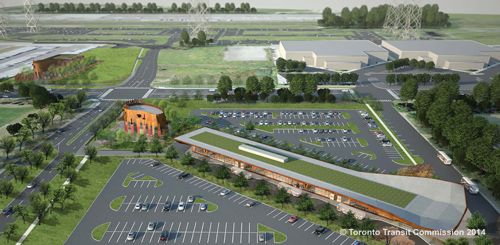
I’d expected the social media messages and emails to die down today after a flood in response to a story I did for yesterday’s Globe and Mail, regarding Metrolinx’s move to seek RFPs on four Eglinton-Crosstown station properties. Instead, it took all morning to work through comments related to the Globe’s follow-up story.
For the most part, I’d tell people to relax. These are still early days in an important and long-overdue discussion. In the interests of brevity, I’ll address only three key but recurring points from the feedback.
1. Build Toronto cannot take over or redevelop TTC stations unless they’re declared surplus, and we’ll be needing these stations for the foreseeable future. This isn’t such a bad thing because Build Toronto was set up badly on a few levels and, as currently structured, would not be an appropriate entity to take on rail-plus-property style land value capture (LVC). Existing TTC stations, except the ones surrounded by lots of land won’t yield much anyway because to capitalize properly, you need prepare for redevelopment while excavating for the stations. Many opportunities have long since been blown.
2. Andy Byford is right to point out that Toronto is not Hong Kong, just as Steve Fry and Richard Gilbert did in the original story on Tuesday. A Hong Kong comparison requires a nuanced understanding of the differences. Most who poo-poo the possibilities don’t know what they’re talking about. Aside from the obvious density contrasts, how land is owned and how the public accepts top-down decision-making are points people could make to further argue that Toronto cannot do what MTR does. However, such arguments affect only the scale of likely returns. None undercuts the fact we can profit mightily from big lessons learned over recent decades in Asia. We can’t adopt MTR”s model as is, but, with a few wise adaptations, transit will work much better for Toronto and the region at a significantly lower cost, and that should in turn nurture the will of voters and politicians to fund transit properly. (I’d add that, contrary to popular misconception, about two-thirds of MTR’s developments are midrise, not highrise.)
3. Though Steve Munro and I disagree on occasion, I respect him and all of us in this town should pay attention to what he says. His warning, “that the idea of developing transit stations sounds good but might not generate as much as proponents believe,” is absolutely fair. The words may have been poorly chosen in that they have many Globe readers today believing he has lumped realistic LVC proponents in with Ford supporters. Alas, calm rational discussions are too rare in the city scarred by absurdly divisive LRT-versus-subway debates. Hucksters promoting free subways have done much to short-circuit important discussions about getting real returns on our transit investments. Gilbert and Fry, quoted in Tuesday’s story because they are knowledgeable and reasonable, don’t expect free subways to happen in North American cities in the foreseeable future. But they would ask: What’s wrong with saving a half-billion dollars on a transit project, or even a billion, especially if it gets more people living and working sooner at new stations? And even if we get back only, say $200-million on our first foray, that too can buy a lot of buses.